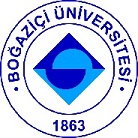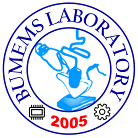|
Courses |
|
EE535: Introduction to Micro Electro Mechanical Systems (MEMS): Offered Fall terms. First time offered in Fall 2005. Integrated circuits and the semiconductor industry have revolutionized our world. They enabled electronic systems like computers and communication systems that dominate our daily lives today with a rapidly increasing information processing capability. Since the world is a non-electronic world, sensors and actuators are needed to interface our electronic systems to the non-electronic world. Therefore, a new field, Micro Electro Mechanical Systems (MEMS), started about 30 years ago, which were intended to make integrated sensors and actuators using the same materials and methods as the integrated circuits. MEMS are miniature devices in micron dimensions that are capable of performing many tasks and functions that involve electrical, mechanical, thermal, optical, fluidic, and other types of signals. Compared to the past, MEMS has evolved into a very big, multidisciplinary and very exciting field that have many research and industrial opportunities. So far, using this technology, inkjet printer heads, pressure sensors, accelerometers, gyroscopes, infrared detectors and micromirror based projectors have been successfully commercialized and have attracted much attention. Today, MEMS and Integrated Microsystems are finding many applications in areas including automotive, health care, consumer appliances, industrial processing, environmental monitoring, biomedical systems, chemical analysis, telecommunication, aerospace systems, and many others. It is also expanding into nanotechnology and biotechnology. This course introduces students to this multi-disciplinary, rapidly growing and very exciting field. It will teach fundamentals of micromachining and microfabrication techniques, including planar thin-film processes, photolithography, deposition and etching techniques, and the other technologies that are essential to MEMS fabrication. Since MEMS requires knowledge and expertise across several different disciplines, this course will also focus on some fundamentals necessary for the design and analysis of devices and systems in mechanical, electrical, fluidic, and thermal domains, and will teach basic techniques for multi-domain analysis (e.g., electromechanical, electrothermal). Fundamentals of sensing and transduction mechanisms (i.e. conversion of non-electronic signals to electronic signals), including capacitive and piezoresistive techniques, and design and analysis of micromachined sensors and actuators using these techniques will be covered. Many examples of existing devices like pressure sensors, accelerometers, gyroscopes and resonators and their applications will be reviewed. This course is based on the class notes and material of EECS414 (Introduction to MEMS) class taught by Prof. Khalil Najafi at the Electrical Engineering Department of the University of Michigan. EE540 (Advanced Digital Design) and EE240 (Digital Systems): Offered Spring terms. Mastering the hardware description language, VHDL (Very high speed integrated circuits Hardware Description Language), for the design (specification, simulation, and synthesis) of digital systems and implementing them on FPGAs. Designing complete digital systems starting from the concept, advancing through the simulation, synthesis, and test, by using different styles in VHDL, namely structural, dataflow, and behavioral, for describing the architecture. Implementing designs on FPGAs (mainly Xilinx SpartanVI).
EE443: Microprocessors: Offered Fall terms. This course aims to expose the students to analysis and design of microcontroller system software and hardware. Assembly language as well as C language programming skills for real-time applications and interfacing will be gained through the laboratory experiments. ARM Cortex-A9, 32 bit microprocessor is used in the experiments. This microprocessor is on an evaluation board, DE1-SoC, a system-on-chip (SoC) solution board using Altera’s Cyclone V SoC. The experiments are about programming the microprocessor using Altera’s Monitor Program and Quartus II CAD software. These experiments will teach registers, addressing modes, instruction sets, branching, subroutines, memory structure, interrupts and background debugging mode of the microprocessor. Analog to digital conversion, real time clock usage, I2C interface and SPI interface will be studied.
Semiconductor Physics and Devices: The primary objective of this course is to provide students with the fundamental physical and electronic properties of semiconductor materials and the operation principles of most common semiconductor devices used in electronic circuits. Starting from the solid structure of semiconductors, the course aims to examine the basic physical processes taking place in semiconductor devices and their relation to the performance parameters of device operation such as photocells, semiconductor pn junction diode, Schottky diode, bipolar transistor, and field-effect transistor devices. |

|
Professor Senol Mutlu |
